Module COMX LoRaWAN868
SKU:M031-C
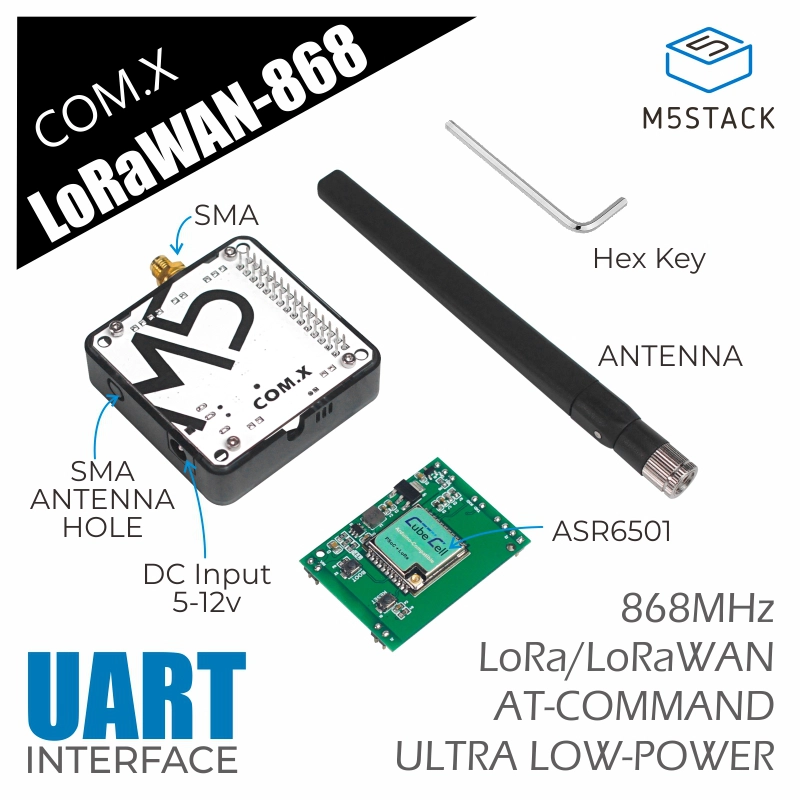
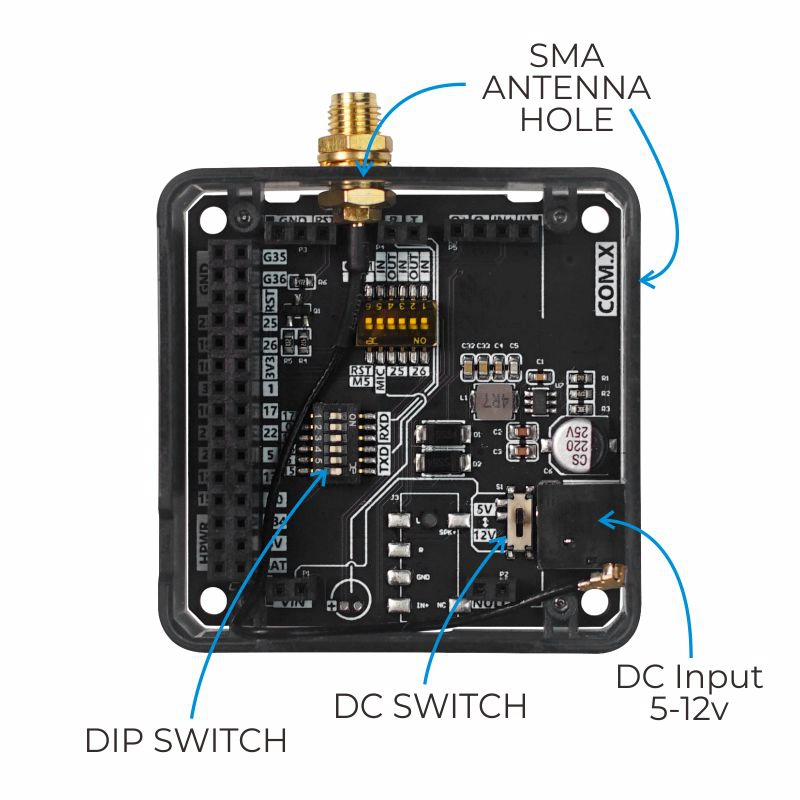
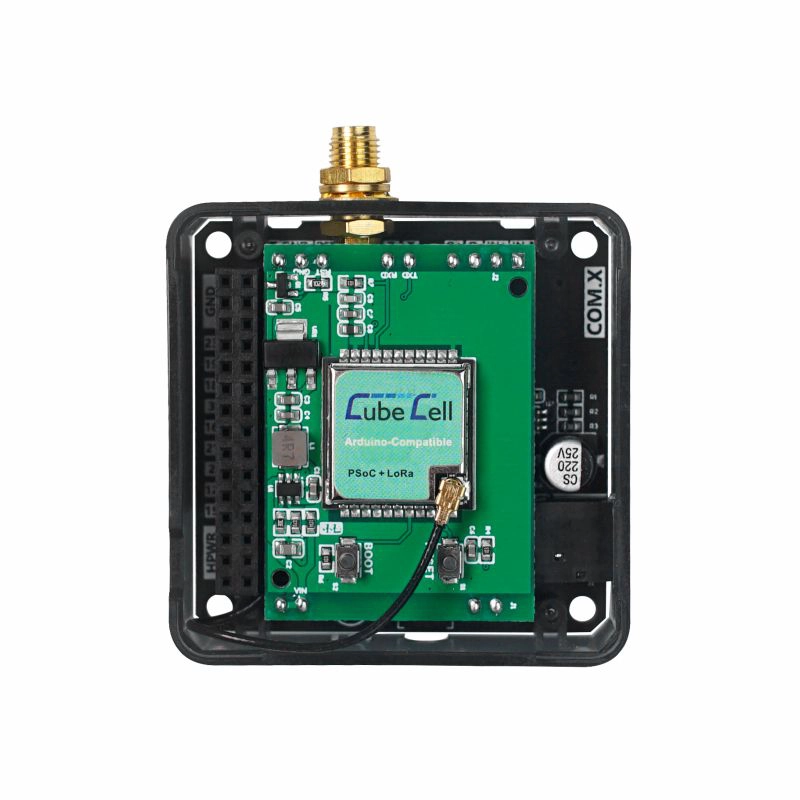
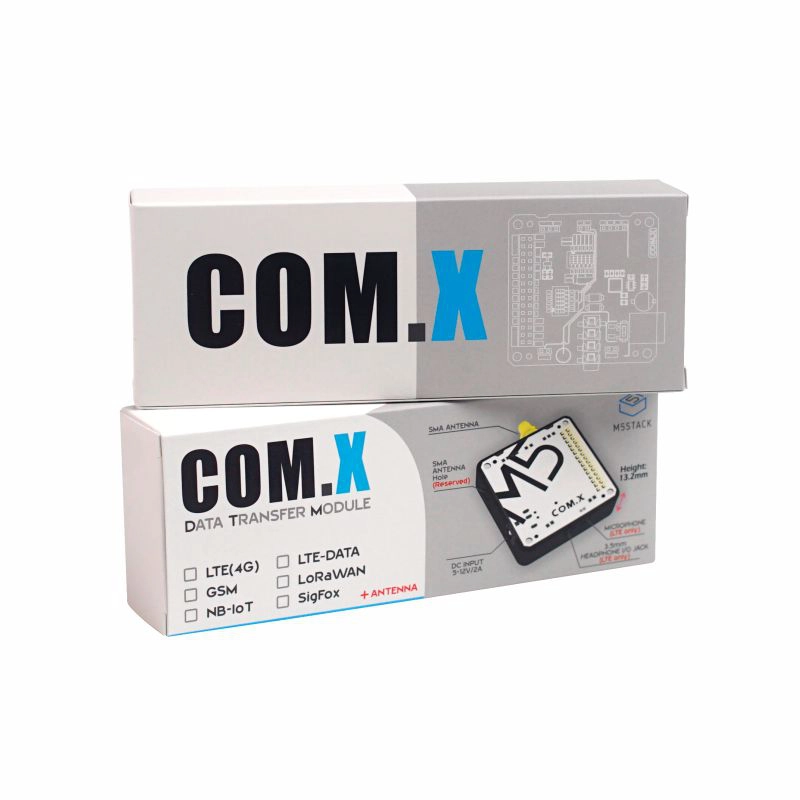
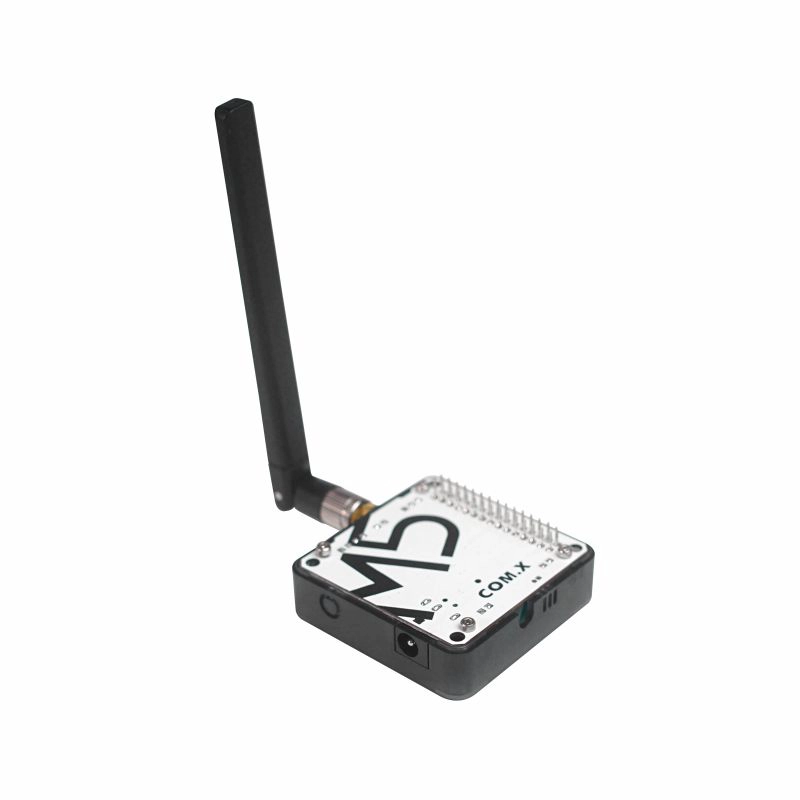
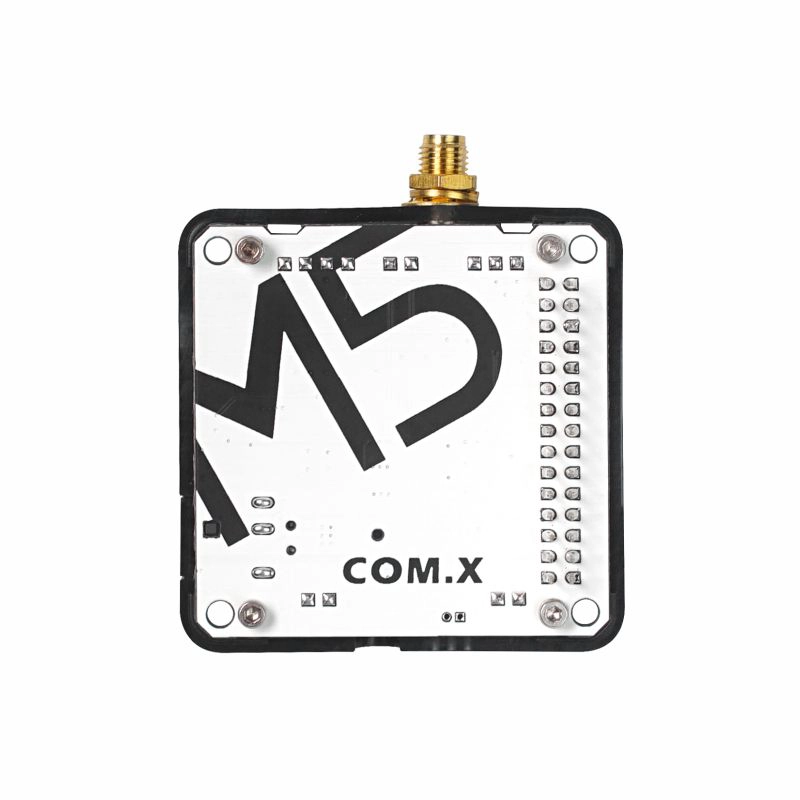
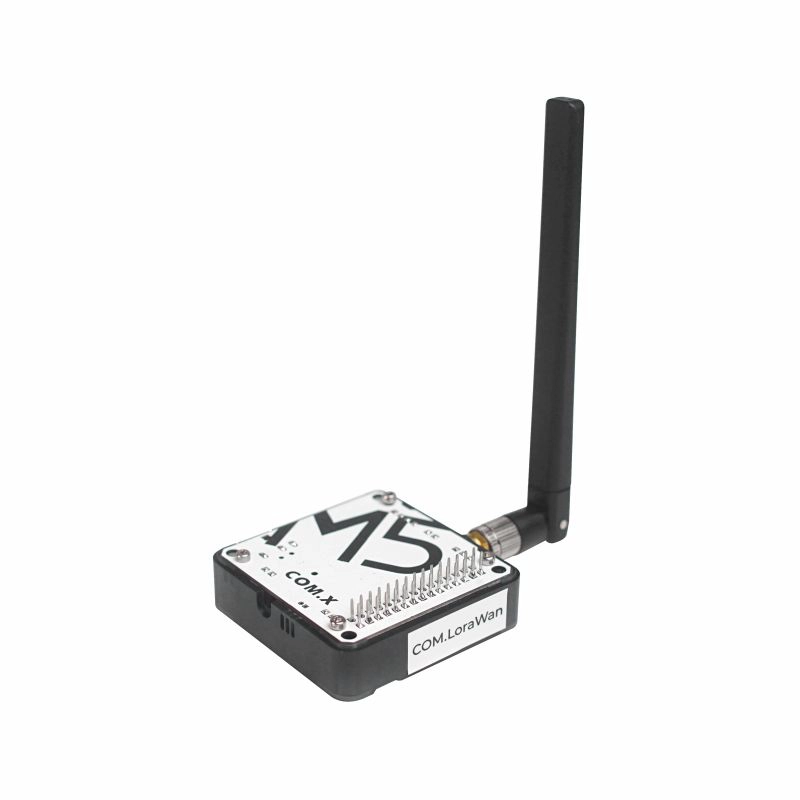







Description
Module COMX LoRaWAN868 is a LoRaWAN communication module in the M5Stack stackable module series, supporting node-to-node or LoRaWAN communication. The LoRaWAN module is based on the ASR6501 design, encapsulating the PSoC4000 and SX1262 chips, and supports the 868MHz frequency band. It is designed with ultra-low power consumption, with extremely low current consumption (3.5μA) in deep sleep mode. To facilitate user configuration of pins, a DIP switch is used to set the hardware serial port pins. Users only need to switch the corresponding pins to ON as needed and specify the pins in the program. A DC power socket is designed at the bottom of the module, allowing power supply through an external power source. When paired with an external antenna, it can achieve better signal quality. This module is particularly suitable for remote low-power transmission applications where ultra-low power consumption and ultra-small size are core requirements. LoRaWAN is a communication protocol and system architecture based on the LoRa long-distance communication network. In terms of protocol layering, LoRaWAN is the Media Access Control (MAC) layer, and LoRa is the physical layer. It is a routing protocol maintained by the LoRa Alliance, primarily used as a network protocol for managing communication between LPWAN gateways and end-node devices.
Note
Features
- Stackable design
- Supports LoRa and LoRaWAN
- Module: Based on ASR6501
- Supported frequency band: 868MHz
- Radio IC: SX1262
- Microprocessor: PSoC® 4000 series MCU (ARM® Cortex® M0+ Core)
- Interface: UART
- Command protocol: AT commands
- Ultra-low power consumption
- UART communication interface:
- Baud rate: 115200
- Stop bit: 1
- Data bit: 8
- Parity bit: None
- Terminator: None
Includes
- 1 x Module COMX LoRaWAN868
- 1 x SMA antenna
Applications
- Automatic remote meter reading
- Smart transportation and smart parking
- Remote irrigation and environmental monitoring
Specifications
| Specification | Parameter |
|---|---|
| DC interface size | 5.5mm |
| Net weight | 40g |
| Gross weight | 75g |
| Product Size | 54.2 x 54.2 x 13.2mm |
| Package Size | 165 x 60 x 36mm |
Learn
EU868 Supported Countries and Regions
Austria/Belgium/Czech Republic/Denmark/Finland/France/Germany/Italy/Netherlands/Sweden/United Kingdom/Angola/Andorra/Bulgaria/Estonia/India/Malta/Philippines/Portugal/Russia/Spain/Switzerland/Zambia
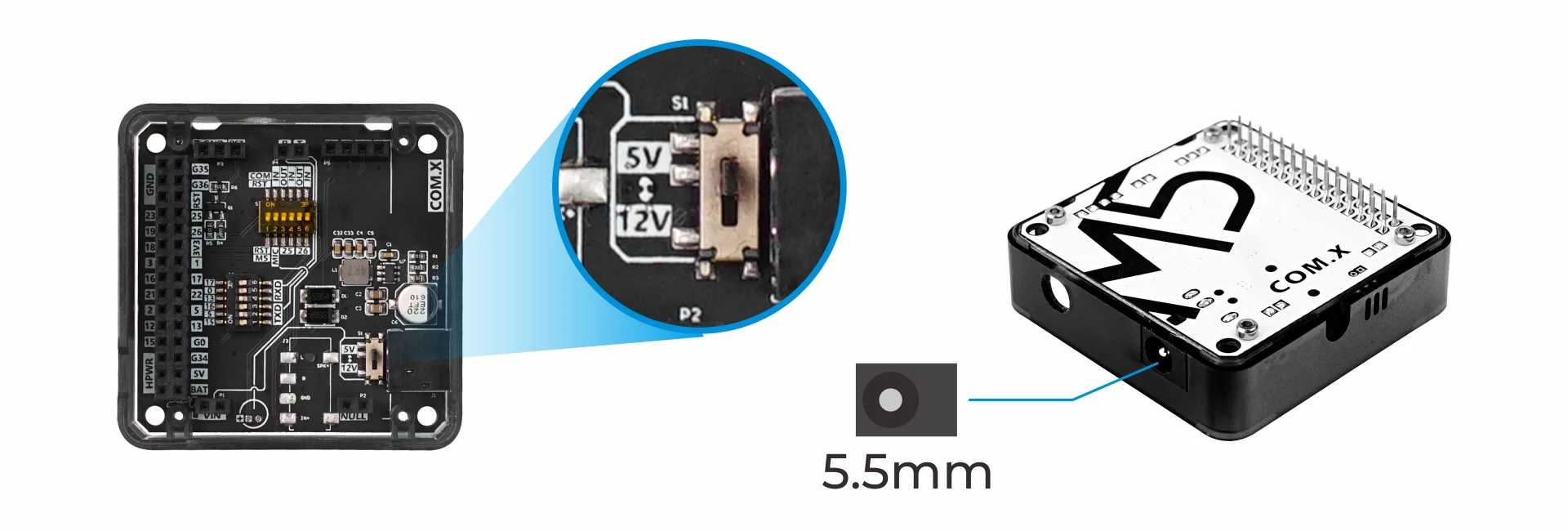
Schematics
Module COMX Module Base Schematic
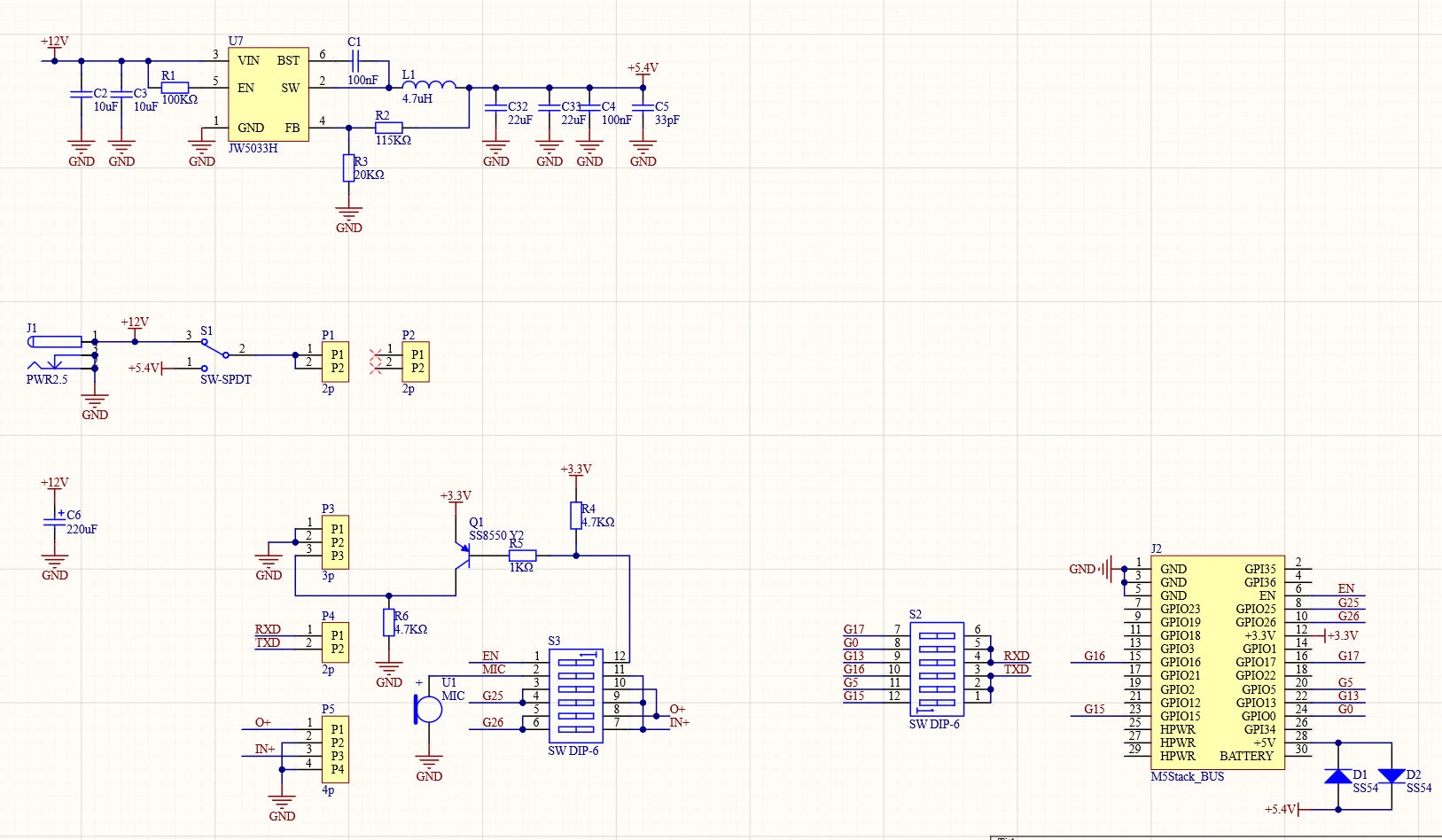
PinMap
M5-Bus
SW on the M5-Bus below can be switched via DIP switches to adapt to different main controllers.| PIN | LEFT | RIGHT | PIN |
|---|---|---|---|
| GND | 1 | 2 | |
| GND | 3 | 4 | |
| GND | 5 | 6 | |
| 7 | 8 | ||
| 9 | 10 | ||
| 11 | 12 | 3V3 | |
| 13 | 14 | ||
| TXD (SW) | 15 | 16 | RXD (SW) |
| 17 | 18 | ||
| 19 | 20 | TXD (SW) | |
| 21 | 22 | RXD (SW) | |
| TXD (SW) | 23 | 24 | RXD (SW) |
| 25 | 26 | ||
| 27 | 28 | 5V | |
| 29 | 30 |
Model Size
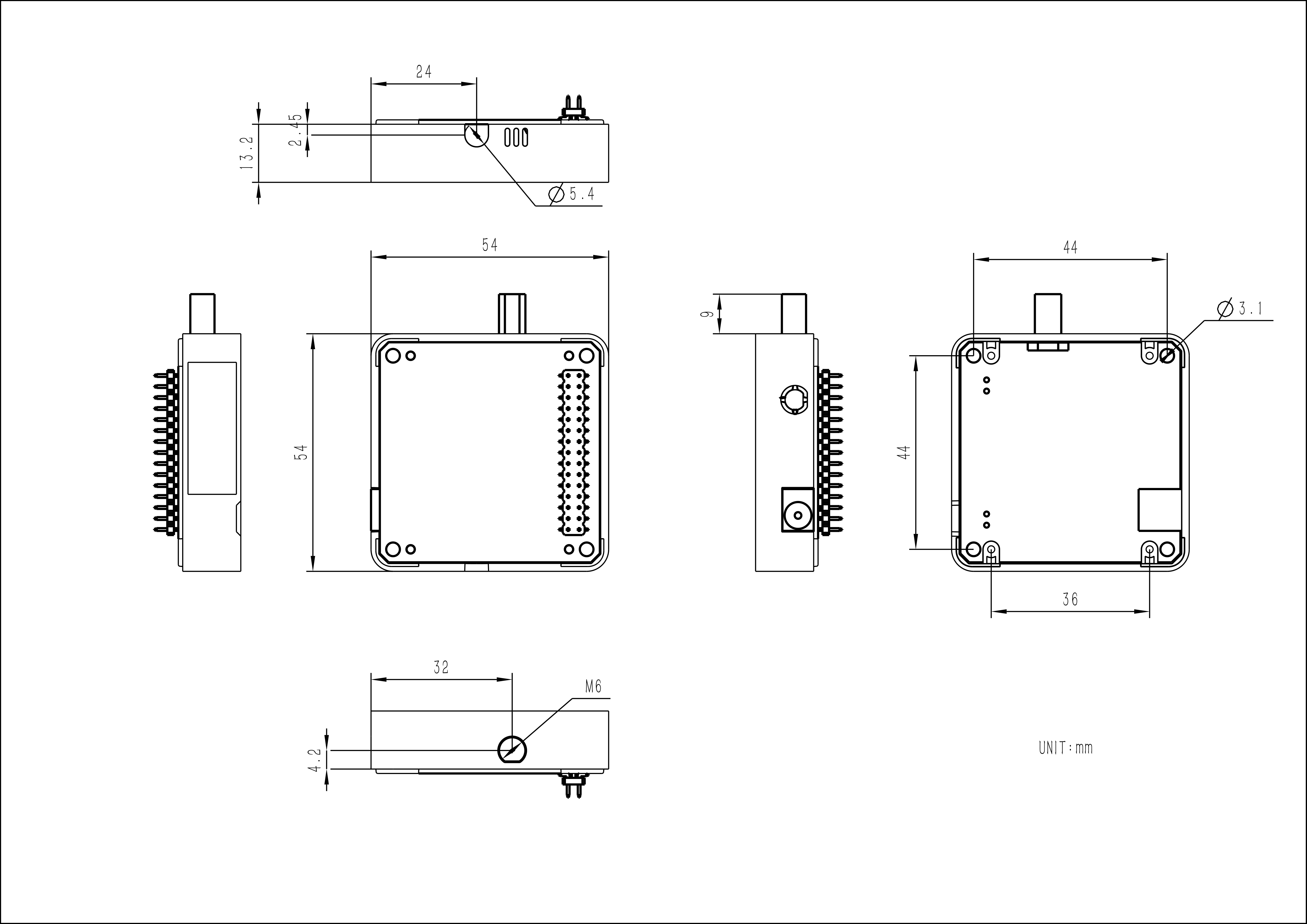
Datasheets
Softwares
Arduino
UiFlow1
Protocol
Easyloader
| Easyloader | Download Link | Notes |
|---|---|---|
| Module COMX LoRaWAN868 Example Easyloader with M5Core | download | / |